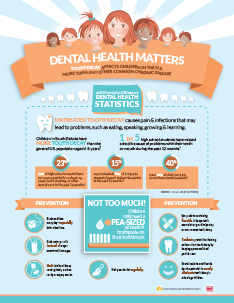The Essential Manual For Handling Oral Emergencies: Emergency Situation Dental Professional Edition
The Essential Manual For Handling Oral Emergencies: Emergency Situation Dental Professional Edition
Blog Article
Write-Up Composed By-Hensley Kincaid
When faced with an abrupt oral emergency, the last point you want to do is panic. Visualize having dental implant dentures and devices at your fingertips to handle the situation with self-confidence and composure. From knowing exactly how to provide prompt relief to finding the appropriate emergency situation dental expert promptly, being prepared can make all the distinction in a dilemma. Stay tuned to discover the important steps and professional pointers that will empower you to navigate dental emergency situations effectively.
Acknowledging Typical Dental Emergency Situations
Identify typical dental emergency situations by understanding the signs and symptoms that show urgent care is needed. Severe toothaches that are persistent and throbbing could be an indication of an underlying concern like an abscess or infection.
Swelling of the face or gum tissues accompanied by discomfort might also suggest a serious issue. If you experience hemorrhaging from the mouth that doesn't quit, maybe a dental emergency situation needing instant interest.
Injuries to the mouth resulting in a broken, broken, or knocked-out tooth are additionally circumstances where urgent oral care is required.
general dentist average salary include a shed dental filling or crown, creating discomfort and sensitivity. Neglecting these indications can lead to more complications, so looking for prompt therapy is vital.
Immediate Emergency Treatment for Oral Injuries
In cases of dental injuries, offering immediate first aid can aid relieve pain and prevent additional issues. If you experience a knocked-out tooth, handle it by the crown (leading component) and delicately rinse off any dust with water. Try to reinsert the tooth back right into the socket, or if that's not possible, store it in a container of milk or saliva until you can see a dentist.
For a broken or damaged tooth, wash your mouth with warm water and use a cold compress to reduce swelling. If you have a tooth pain, wash your mouth with a combination of warm water and salt to assist ease discomfort. In the case of a bitten lip or tongue, tidy the area carefully and apply a cold compress to reduce swelling.
Exactly how to Find an Emergency Situation Dental Expert
When confronted with a dental emergency, knowing how to rapidly situate an emergency situation dentist can make all the difference in obtaining prompt treatment and alleviation. Begin by calling a 24 hour dentist , as they might have emergency hours or be able to refer you to another dental expert who can assist.
If it seeks hours or you're unable to reach your dental practitioner, take into consideration utilizing on-line resources such as oral association internet sites or emergency dental expert directory sites. These systems can supply you with a list of dentists in your location that offer emergency situation solutions.
Another alternative is to call your regional medical facility or immediate care center. They usually have connections with emergency situation dental experts or oral centers that can assist with urgent oral concerns.
In cases of extreme pain, swelling, or trauma, do not wait to look for immediate aid from the closest emergency room.
Final thought
In conclusion, recognizing just how to recognize common oral emergency situations and taking prompt emergency treatment actions can make a difference in the outcome.
Finding an emergency situation dentist quickly is essential, whether via calling your regular dental expert, checking online sources, or connecting to regional healthcare facilities.
Remember, seeking prompt aid from an emergency clinic for extreme discomfort or injury is always a top priority.
Stay educated and prepared to manage dental emergency situations effectively.
